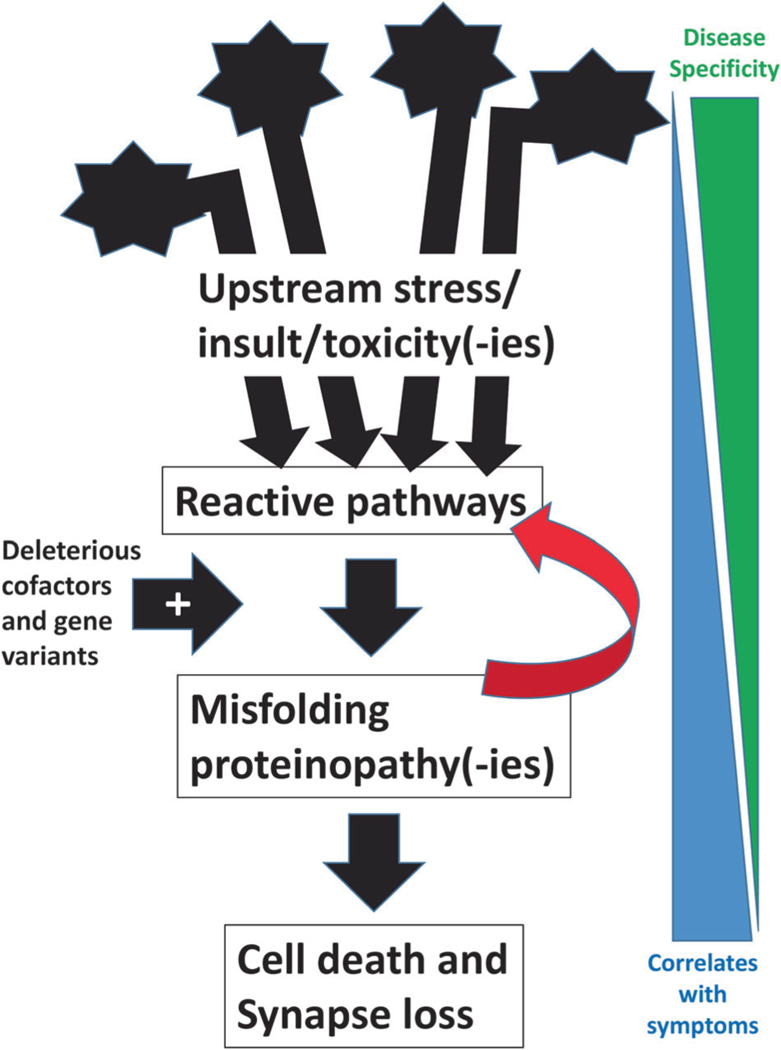Fig. 1.

Schematic cartoon depicts a paradigm for the mechanisms underlying neurodegenerative conditions of aging. Multiple different upstream genetic and/or environmental factors have the potential to constitute a trigger for reactive changes in the brain. The reactive mechanisms and pathways may be compensatory or beneficial in some contexts. However, those same pathways may also contribute to one or multiple different proteins misfolding. The tendency to generate misfolding proteins appears to be augmented among individuals with specific genetic risk factors. Importantly, a salient feature of misfolding proteins that are impactful, in a clinical and biologic sense, is that they appear to have a propensity to create or promote a micro-environmental shift toward biochemical pathways that augment their own misfolding. This deleterious feedback mechanism (signified by the red arrow) may promote an auto-propagating cycle, greatly amplifying the impact of the primary disease mechanism(s). The net effects of the upstream trigger, reactive pathways, and misfolding proteinopathies, are cell death and synapse elimination that can culminate in clinical manifestations. Note that on the right of the figure is indicated an inverse relationship between the factors that are disease-specific (related to upstream mechanisms) and the downstream pathologic phenomena, such as synapse loss, that correlate best with antemortem clinical symptoms
